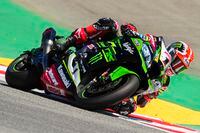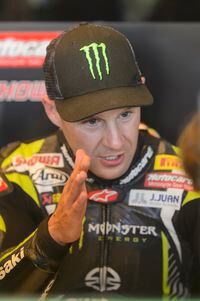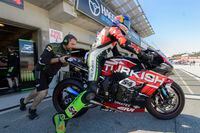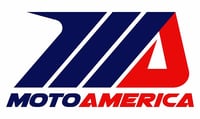Every weekend, everyone starts from zero. Of course, the target is always to win. We don't start the year just trying to do our best; we want to win.
I started to understand that my last year with Honda—2014. "Okay, maybe the championship is unrealistic, but let's try to maximize our potential, try to think about the championship as a consequence of 26 battles." Now, with three races in a weekend, we have 39.
If you emotionally disengage the championship and just think about each battle, every day you wake up, it's a new one and you try to do the best you can.
The war isn't won on days where you win the race. It is won on days where it's out of your hands and you have to slog through and make a result. And this year, like every year, we've done that.
There have been races this season where, flat out, there is no chance I can win; we knew that from Friday morning. The most evident was in Phillip Island and Thailand, where [Ducati] had such an advantage on pace we couldn't aim to win. "Okay, today we have to try our best and finish second."
We went to the first race at Phillip Island and got beat really bad. We tried to convince ourselves it was the Phillip Island effect. And then, in Thailand, we got beat so bad again. For me, it was the Ducati effect; that bike was so fast. But in Aragón and Assen, places where we expected to be strong, it was the same story.
In Thailand, it was so difficult to maintain motivation. You bust your ass around the corners for a bike to effortlessly pull away. But that is the situation. They've done a very good job to bring this bike that's revving 1,000 rpm more than any other bike on the track, which gives them more possibilities with final gearing and gearbox ratios.
I had to reset my mentality, reset my targets and focus. The underdog challenge situation really ignited, and it felt good. It felt good to be the guy climbing up the hill, as opposed to fighting from the top. That was a new experience. It's still quite exciting. I've been in this situation before, and I'm experienced from a mental point of view to cope with it.
When I got beat in Phillip Island, everyone was so happy. They were like, "This guy is either going to have to work for this championship or he's going to be beaten, and that's great." Then, after Aragón and Assen, everyone was like, "The situation is even worse than when Rea was winning because [Álvaro] Bautista is winning by 15 seconds." Then I felt a shift: The fans started to want me to do well.
Now we're here in this position, just before the summer break, leading the championship again, which is a huge turnaround from where we came from after four races, where the mentality inside the team was not so optimistic. We have to keep fighting and believing.
You've got three manufacturers doing things completely different. Yamaha is trying to get its bike to stop like a Kawasaki, and we're trying to get our bike to turn like a Yamaha. Our bike is very stable, their bike is very agile. The Ducati is very fast.
Our bike is one of the most rounded packages inside the paddock. It's easy to extract the best potential out of the Kawasaki; we're very experienced with this bike over many years. We had a new model in 2016, but from that we constantly work with chassis balance.
What we're really lacking is engine; we need more power. This new V4 R is a MotoGP bike in Superbike clothing. I got dubbed a crybaby for highlighting that after the first race. For me, as a rider, it was ridiculous to not even be able to stay in [Bautista's] slipstream.
We have to be reactive now and push our engineers if we want to compete. We've enjoyed being the benchmark for four years, but to continue fighting, we need to improve. I feel like I'm with a team and a manufacturer that understands that.
People are watching now. You didn't turn up to Donington and think I'd win three races. That unpredictability is pretty cool. I'm starting to enjoy riding my bike a little bit more these last few races. But it's still tough, really tough.













/cloudfront-us-east-1.images.arcpublishing.com/octane/RO36KTIVYZEATJW7CCB77EQHLQ.jpg)
/cloudfront-us-east-1.images.arcpublishing.com/octane/BUIUXSLF5RFRVJ3E26VRO5V2AY.jpg)
/cloudfront-us-east-1.images.arcpublishing.com/octane/EJJ2JBBSEZAWLFCRDALQOIBFVU.jpg)
/cloudfront-us-east-1.images.arcpublishing.com/octane/WVYKJFMINVFMFH37AE4OUEWVIM.jpg)

/cloudfront-us-east-1.images.arcpublishing.com/octane/JJ3MC6GNDFF5ZNYD3KD3E4EY7Y.jpg)
/cloudfront-us-east-1.images.arcpublishing.com/octane/XH2ETEU4NVGDFNQO2XT2QQS5LU.jpg)
/cloudfront-us-east-1.images.arcpublishing.com/octane/UFG652C27BDBFPK42TDAJ5CMX4.jpg)
/cloudfront-us-east-1.images.arcpublishing.com/octane/AUE3NFVRRZDSBIDVUGIYIDQNUI.jpg)
/cloudfront-us-east-1.images.arcpublishing.com/octane/LYR62CH2WNBMHJJVXVATZHOUE4.jpg)
/cloudfront-us-east-1.images.arcpublishing.com/octane/RBCTRGBQYBDK7A6XPG3HKPS7ZQ.jpg)
/cloudfront-us-east-1.images.arcpublishing.com/octane/MQXQRYMZVBCWJIRYP3HEN3SHVE.jpg)
/cloudfront-us-east-1.images.arcpublishing.com/octane/TSPODNNEWRDSVJGUCNQTDG4ADI.jpg)
/cloudfront-us-east-1.images.arcpublishing.com/octane/X5TB7BDV4BA2RPSY54ZGK27RP4.jpg)
/cloudfront-us-east-1.images.arcpublishing.com/octane/REUHOJXRDBGZ5IHBYZCCBCISPA.jpg)
/cloudfront-us-east-1.images.arcpublishing.com/octane/52LGJTCKBFEHDF7S7H4CVUIMGM.jpg)
/cloudfront-us-east-1.images.arcpublishing.com/octane/YMWAIPIPSJAOXOU3QMJMGH37OM.jpg)


/cloudfront-us-east-1.images.arcpublishing.com/octane/EJ6KZRGAYBCVXNL2PJXL37UVWQ.jpg)
/cloudfront-us-east-1.images.arcpublishing.com/octane/AAN4TI76M5H5JMUVEIGASWXBDU.jpg)
/cloudfront-us-east-1.images.arcpublishing.com/octane/P3RXD2UCPFF37CMB7CHPVKXORY.jpg)
/cloudfront-us-east-1.images.arcpublishing.com/octane/VZEG2EJI2RDFZNHLRZMU56MD3Q.jpg)
/cloudfront-us-east-1.images.arcpublishing.com/octane/GVJQO5FFOFBWNGODOBRB4FBAW4.jpg)